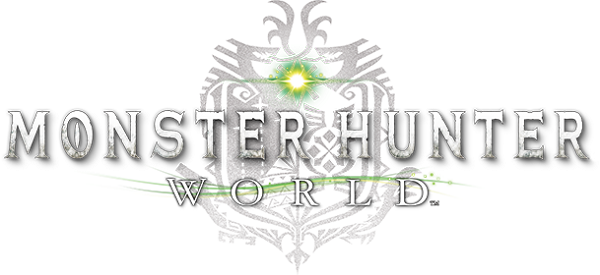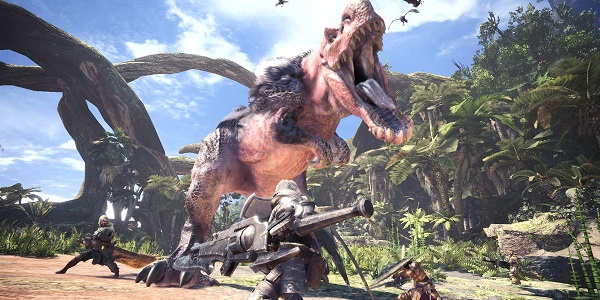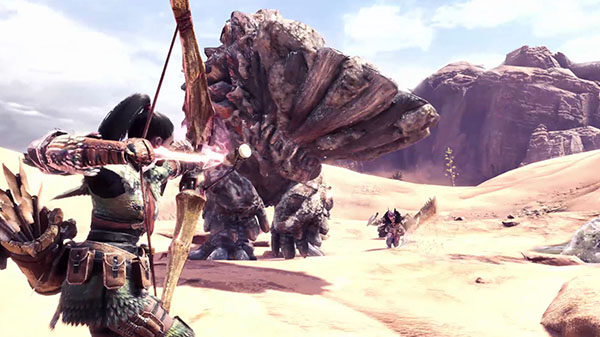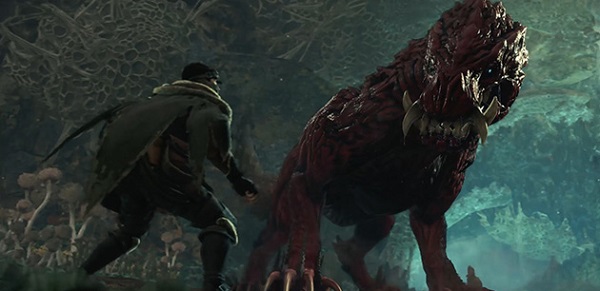
I’ve been playing Monster Hunter games for almost eight years now, and as time goes on, I only find myself more and more enamored of the series. Maybe that’s a little weird considering how little it has changed over the course of the last decade, but you know what they say – if it ain’t broke, don’t fix it.
Monster Hunter has actually developed very similarly to the Pokémon series of its lifetime. Each game contains the same core gameplay mechanics, and every sequel refines a few mechanics, sands down some rough patches, and maybe throws in some weird new distraction that can be helpful if you take the time to use it. Where the bigger differences lie are in the new worlds to explore in each game, and the new stable of monsters that come around with each generation.
However, times are changing, and so are the things that we thought we could expect from a new Monster Hunter game. Two years ago, Pokémon Sun and Moon changed up the Pokémon formula in some very drastic and surprising ways, and now with Monster Hunter World, Capcom has proved that they don’t have to stick to the rigid formula that we’ve seen in every MonHun game that came before it.

Now that I’ve said that though, I’d like to note that the core gameplay loop is the same: Take your big weapons, find a big monster, kill it, and use its fangs and scales to fashion bigger weapons to fight bigger monsters with. Repeat ad infinitum with bigger and stronger monsters. This can’t change, or else it just wouldn’t be Monster Hunter. Obviously. But everything that’s wrapped around this core concept has seen a change that ranges between mild tweaking to a complete overhaul.
Take the hunting locations, for example. In previous Monster Hunter games, each one is made up of roughly a dozen smaller, self-contained sections. They’re broken up by brief loading screens and each area is more or less a large box with different dressing to give you an idea of where you are. There wasn’t ever a ton of interactivity or verticality until the fourth generation, where jumping attacks were introduced and the monster mounting mechanic made its debut appearance.
Now, every location is a single, gigantic ecosystem. You’re free to roam as you wish with no loading screens, and monsters just prowl about freely. Every location is now alive with so much detail, there are animals all over the place, tons of different terrains, and so many interactive environmental bits. It’s really great, but now there’s so much going on on-screen at all times that my brain has a rough time parsing everything now and then, and I absolutely need to be wearing my glasses to be able to take in all the visual information. Not to mention that the locations are so big now, that even with a map it’s incredibly easy to get lost. The first area, the Ancient Forest, might even be the worst because of its dozens upon dozens of narrow, twisting paths and expansive treetop maze. It’s an absolute nightmare to try to get anywhere that isn’t one of the larger main areas. Not to mention that gathering resources is slightly harder than usual because since there’s so much more detail, the designated gathering points no longer stand out the way that they used to. As a way to mitigate this, all said resource points are actually shown on your map, so that’s pretty nice, but it also leaves the map cluttered with a million tiny icons.
However, the more vivid world does add a couple of really cool things. Right off the bat, it’s a lot more fun to explore these places, since they are more than just a set of twelve rooms with vaguely different scenery. Even when you aren’t actively hunting a monster it’s fun just to run around learning about the local wildlife, swinging on vines, and gliding through the sky on air currents. Being able to use said environment to your advantage in battle is also a great touch. Nothing is quite as satisfying as punting a paratoad into a charging Anjanath, so that the toad explodes into a cloud of paralyzing dust that stuns the monster and gives you a chance to either escape or dole out a ton of easy damage. I haven’t mastered or even found all of the different ways that nature can give you a leg up, but little things like that really do add a lot to the game.
Your basic hunting tools have all changed in some fashion as well, and mostly for the better. Whetstones are now infinite, and you have one permanently equipped. You also have a BBQ spit, pickaxe, and fishing rod on your person at all times. Bug nets are gone entirely, but there’s a new item called the capture net that you can use to catch non-monster animals, as well as fish and bugs. One of the bigger changes is the new “slinger” tool, which is a device attached to your hunter’s arm. It’s main use is to fire off various rocks and plants that you can scrounge up in the environment, most of which are just used to catch a monster’s attention, but some have other effects (which I haven’t learned yet). The slinger also works as a grappling hook, which can create shortcuts through the world, allow you to ride rope lifts, or get you back onto a monster after being flung off during a mount.

Bar none, the most important new tool that you’ve been given are the scoutflies. Their main use is for tracking monsters by providing a glowing path through the often difficult-to-navigate environments. They don’t just work though, and you’ll need to accustom them to a monster’s scent by finding footprints or other tracks before they can form a direct path to your target. Over time, the scoutflies will also level up, first so that they can automatically detect monster tracks, and eventually just be able to know where your quarry is right from the start of the hunt. Another neat thing that the scoutflies do is hover over nearby gathering points, and that green glow can be absolutely essential in finding stuff in the visually crowded worlds. I was somewhat opposed to the scoutflies at first, but considering how vastly different and huge the locations in this game are, actually finding monsters would be intensely aggravating without them.
While the flow of the game has remained largely the same, there are some strange little diverting streams in the river of Monster Hunter World, and they’re mostly due to the completely revamped online system. Before, you would gather up to four people in a hub, each would do their prep as required, then you go out on a hunt and everyone comes back to that hub again. It was really simple, to say the least. Now the online system is all “modern” and if I might say, completely f**ked. Now, you enter an online lobby that up to 16 people can join, whereupon it becomes a free-for-all between those 16 to post and join quests. It’s a huge, disorganized mess and I mostly hate it. The saving grace is that you can make a private room if you just want to play with friends, which makes so much more sense.
This system also changes the way that hunts work. In World, you don’t have to go back to the hub after a quest. You and your party can remain in the same location and just post another quest from there. All the between-quest amenities are at the base camp, so you can get your eating and gear-swapping done in the field now. And while this is great, the stupid thing is that when you post a new quest from camp, you still need to wait for the area to completely re-load, which entirely negates any reason for staying there in the first place. It’s dumb. It’s really, really dumb. Sure, you can just go out and explore the area freely, but you’re missing out on a load of potential rewards for any time you’re out in the field without an active quest.
I’d also like to mention that the hub town is way too friggin’ big. It takes forever to get anywhere, and there’s no reason for it other than “immersion” I guess. The worst part is that the canteen, the one place you absolutely want to go every time you’re there, is on the exact opposite end of where you’re dumped whenever you return from an outing. It’s ridiculous. I shouldn’t have to spend 30 seconds running to the other side of town every damn time I’m there. And this is very important, because not eating before every hunt is like willfully gimping yourself. At least you can eat in the field now…
I would also like to point out that the difficulty balance for multiplayer seems to have been fudged a little bit. In past games, when you go into multiplayer mode, the monsters’ stats are scaled up once, to be an even match for two hunters. That means that if you’ve got a full complement of four, the game ends up being a little easier than intended. Still tough! But I’ve been surprised many times at how fast some monsters have gone down to a four-person team. In World, however, the difficulty still seems to scale only once, but now it ratchets up to be more appropriate for four players, regardless of how many people are actually participating. On one hand, this makes the experience better for full teams, but it also makes life much more difficult when you’re just two people. Two-person hunting is my preferred style, so it hasn’t been great for me. Of course, this is just conjecture. I have no proof to back up my claims, only intuition based on roughly 800 hours of experience.
Okay! So I think that’s all of my gripes. The worst of them, anyway. There are a lot of cool new features in Monster Hunter World that I actually like! For example, you can try on a complete armor set at the same time now! No more previewing each piece individually and trying to imagine what they look like together. The item box is now stripped down to only what you need at any given time, so you don’t have to sort through dozens of pages of monster bits to find what you’re looking for (unless you’re selling stuff). Likewise, when you’re equipping something, it’ll only show you pieces of the same equipment category. It’s a very tiny change, but it really does make a difference. The armory also shows complete weapon trees when you’re upgrading your weapons, which is just an amazing change. Now you can chart a direct course to exactly the weapon you want, and you can even roll back an upgrade if for some reason you feel the need.
On that same note, Monster Hunter World now provides a very thorough in-game log of all the monsters. This includes which of their parts can be broken or severed, their elemental weaknesses, which parts are weak to which types of attacks, and a full list of items that they drop and how to make them drop. It’s insane –IN. SANE.– that none of this info has ever actually been provided within the game before, and it’s the greatest feeling to not have to be looking up all this info on my phone before every hunt.

Maybe it’s time now to actually talk about the monsters? Yeah. You know, the main draw of the game. MonHun World comes with a complement of 30 packed-in monsters to hunt (and one planned DLC monster), which is a bit slim compared to the whopping 107 monsters featured in Monster Hunter Generations (a 3DS game, remember). It’s even less than the 35 monsters in Monster Hunter Tri, which was my introduction to the series. But this isn’t a pissing contest, so forget the numbers. Of those 31 beasties, 18 are brand spankin’ new, and the bulk of them are… really weird.
Don’t get me wrong! I’m a big fan of a lot of the new guys, but some of their designs are just so alien compared to the kind of creatures we’re used to. The Anjanath, who I mentioned before, is at first glance, basically just a more ghoulish t-rex. But then it’s got these weird extendable nostrils that pop up from time to time, and after that a pair of huge retractable fins fold out of its back. It’s a really weird-lookin’ thing! And if I may say so, the most overpowered monster since Rajang. Anjanath is way too strong for when you’re expected to be able to slay it. But back to the weirdness, another thing you’ll find in the Ancient Forest is Pukei-Pukei. Not only is it’s name odd, but it’s a horrifying mish-mash of animal parts; a wyvern bred with a frog, a chameleon, a bird, and a ring-stacking children’s toy. Then you have Paolumu, which is some sort of mouse-dragon hybrid that can inflate its neck to massive proportions. And that inflated neck, the way it jiggles… ugh, it’s one of the creepiest things you’ve ever seen. The last one that bears mentioning is Odogaron, and it is the stuff of nightmares. A giant, hairless hellhound with two rows of claws on each foot, and a gigantic maw that can open up like a snake’s. There have been frightening monsters before, no doubt, but I think that this is the first one that actually looks like something that was pulled straight out of Hell.
Another thing that’s really strange about Monster Hunter World is something that I only noticed as I was nearing the end of the story; I was actually finding myself engaged in the story! Typically, when one plays a Monster Hunter game, one simply mashes the button until the text stops and gameplay resumes, but here… there are fancy cutscenes, and voiced dialogue, and a story that’s actually fairly interesting. It’s not going to win any awards, but it’s more thoughtful than the usual “monsters are running amok, you have to stop them” plot that the games have always used. This one is about solving a mystery of why elder dragons migrate to the “New World” every ten years; hunting monsters here isn’t so much for the sake of hunting monsters, but more about keeping all the biologists safe while they learn more about said monsters and the island.
The one major problem is with the story is not the story at all, but rather a character: your partner, The Handler. Her face is as creepy as all get-out, thereby proving that Capcom still can’t do human faces very well. Most other characters look okay, but everyone’s facial animations are questionable. The lip sync is way, way off, showing that they didn’t even try to match the English voices. Which is actually okay! I prefer it being so completely off and obvious to say, the lip sync issues in Xenoblade Chronicles 2, where the English voice actors actually tried to match their dialogue reading to the Japanese-based lip movements and it just made a lot of dialogue sound weird and stilted. At least in MHW there aren’t any forced stutters or weird pauses in the middle of sentences.
But yeah, The Handler: super creepy lookin’. She’s an alright enough character, her face is just way down there in the uncanny valley. Oh, and just for the sake of clarification, no characters in a Monster Hunter game ever have actual names. They always go by a title or basic descriptor. Why? I have no idea, but it’s not something that any other game has done, so it remains unique and I’m okay with it.
So what else is there to say? Not much, really. Despite being head-over-heels about the franchise in general, I was not overly excited for Monster Hunter World because I was afraid it would change too much. But then I proceeded to sink roughly 24 hours of playtime in over the course of the release weekend, so I’d say that everything turned out alright! I’m going to keep longing for the way that online lobbies worked in previous games, but I’m sure that in time I’ll warm up to this more modern way of doing things. Even with that hiccup and some of the other things that bother me, I’m sure I’ll be hitting the triple-digit hour count on the in-game clock before I know it. I know there was a lot of complaining in this review, but the bottom line is that I still think that the game is a ton of fun. That said, if you’ll excuse me, I have done far too much typing about Monster Hunter now, and I have to get back to playing Monster Hunter. See you in the New World!
